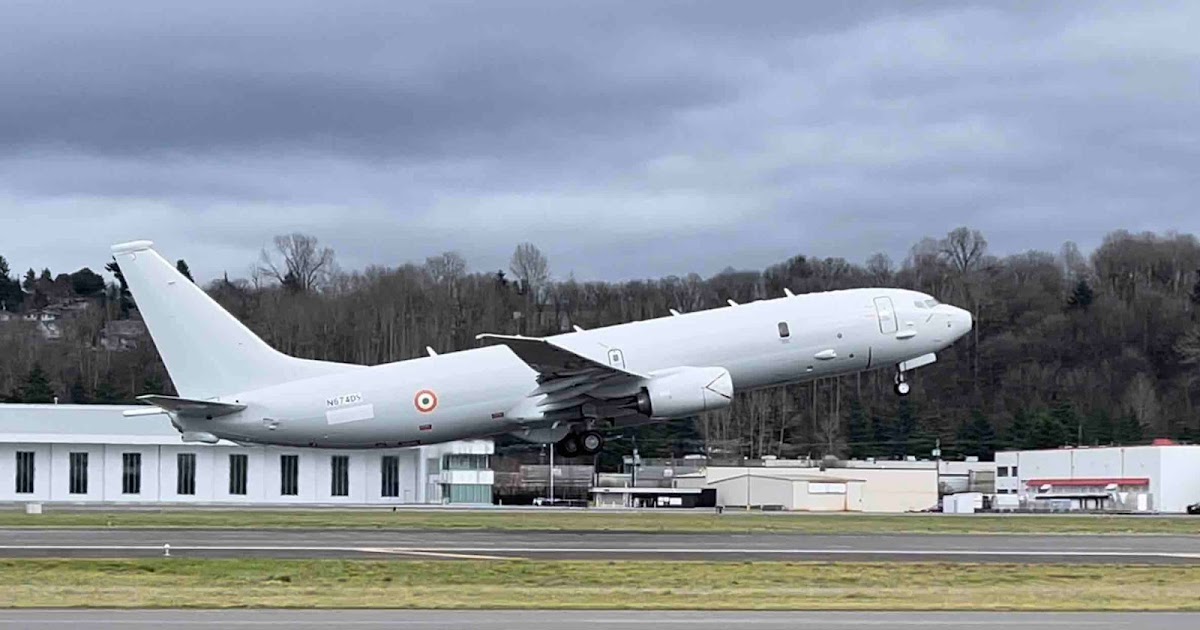
The P-8I was a significant asset, given its maritime surveillance, reconnaissance, anti-sub and HADR capacities.
By Vikas Gupta
Defence News of India, 25 February 22
The Boeing Company delivered the last of 12 P-8I Poseidons on Thursday long-range maritime reconnaissance and anti-submarine warfare (LRMR-ASW) aircraft commanded by the Indian Navy.
The Indian Navy became the P-8I’s first international customer in January 2009, when it signed a contract with Boeing for eight P-8I Poseidon jets for US$2.17 billion, according to a Comptroller and Auditor report. general.
In 2013, the Indian Navy began enthroning these first eight Poseidons. These have since flown 35,000 hours, requiring strict control and close observation of the northern Indian Ocean.
In 2016, India The Ministry of Defense (MoD) contracted for four more P-8Is under an options clause in the first contract. The P-8I delivered Thursday is the last of these four.
Today, the P-8 is also operated by the US Navy, Royal Australian Air Force, UK Royal Air Force and Royal Norwegian Air Force.
The P-8I has proven to be a significant asset to India, given its exceptional capabilities in maritime surveillance, reconnaissance and anti-submarine abilities, TThe aircraft has also been deployed in disaster relief and humanitarian missions.
He played an important role in the two-year standoff on the Ladakh border with the People’s Liberation Army (PLA), stealthily reconnoitering Chinese positions and taking over PLA deployments in rear areas.
“With this delivery of the P-8I maritime patrol aircraft, we continue to nurture this partnership [with India] and are fully committed to working closely with the Indian Defense Forces to deliver the appropriate value and capabilities to meet their operational requirements,” said Surendra Ahuja, former Admiral of the Indian Navy and now Head of
Boeing Defense India (BDI).
The P-8I is widely recognized as the deadliest LRMR-ASW aircraft in the world. It is a derivative of the Boeing 737-800 airliner, equipped with a plethora of sensors and weapons.
These include a Raytheon multi-mode radar to detect aircraft, surface ships and submarines, while another belly-mounted radar looks rearward like an electronic rear-view mirror. A “magnetic anomaly detector” on the tail of the P-8I detects submarines from the magnetic field created by large masses of metal (such as submarine hulls).
Hostile submarines, once detected, are destroyed by shipborne Harpoon missiles or Mark 54 torpedoes. Alternatively, targets are digitally “passed” to friendly warships or submarines, which complete the job.
BDI – Boeing’s local subsidiary in India – supports the Indian Navy’s growing P-8I fleet by training flight crews, providing spare parts, ground support equipment and supporting service representatives on field. Boeing’s integrated logistics support enabled high fleet readiness at the lowest possible cost.
Several complex and mission-critical P-8I components, such as radar fingerprint system, IFF (I/T) and data link, speech privacy system, satellite communication system mobile and wire harnesses are made in India by supplier partners including micro, small and medium enterprises. (MSMEs) located across the country.
Boeing says it has strengthened its supply chain with more than 275 partners in India and a joint venture to manufacture airframes for Apache helicopters. The annual supply from India is $1 billion. Boeing currently employs over 3,500 people in India and over 7,000 people work with its supply chain partners.
Boeing is also setting up a training support and data processing center at INS Rajali, Arakkonam, Tamil Nadu, the main base from which P-8I missions are launched to monitor the Indian Ocean.
In addition, Boeing is establishing a sub-center at the Naval Institute of Aeronautical Technology in Kochi, under a training and support contract signed in 2019. This will allow P-8I crews from the navy to rapidly increase their mission proficiency and reduce onboard training time, freeing up aircraft for mission tasks.
Over the years and in joint naval exercises with partner nations, such as Exercise Malabar, Indian P-8I crews have developed joint exercises and communication protocols with their counterparts that enable them to take action fast and deadly against hostile warships and submarines.
To enhance this interoperability, India has entered into joint agreements with partner countries, such as the United States. These include the Communications Compatibility and Security Agreement (COMCASA) and the Basic Geospatial Cooperation Exchange and Cooperation Agreement (BECA).
In any war with China, P-8Is will play a crucial role in tracking People’s Liberation Army (Navy), or PLA(N) ships and submarines as they attempt to move from the South China Sea to the Indian Ocean.
To prevent this, Indian Navy P-8Is would patrol and mount surveillance over four major Southeast Asian straits – Malacca, Lombok, Sunda and Ombai-Wetar.






